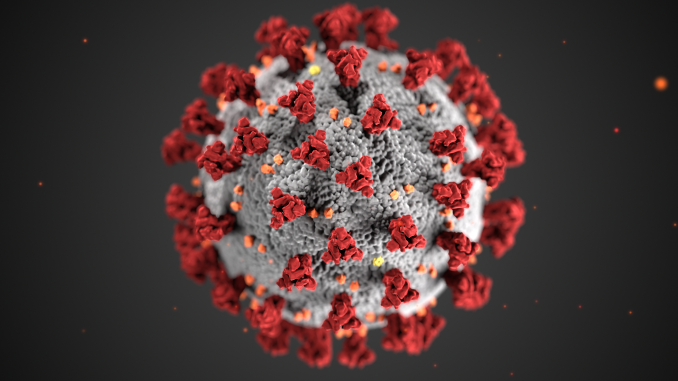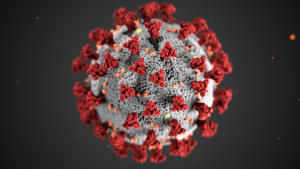
Introduction: history of COVID-19
The global public health is currently facing the third coronavirus crisis in less than 20 years. The current COVID-19 epidemic has brought back the memories of SARS-CoV in 2003. In this outbreak, more than 8000 people were infected and 774 people had died. Another coronavirus outbreak happened in 2012, by MERS-CoV in 2012.
Human coronaviruses were first identified in the mid-1960s. This family of viruses was named for their morphology with crown-like surface projections.
The clinical disease named COVID-19 is caused by a novel betacoronavirus, now named SARS-CoV-2. The four strains of coronaviruses exist: alpha-, beta-, gamma-, and deltacoronaviruses. The group of betacoronaviruses also contains SARS-CoV and MERS-CoV.
Although its origins are not fully understood, it is currently thought that SARS-CoV-2 probably evolved from a strain found in bats. COVID-19 was first reported on December 31, 2019 to the WHO Country Office in China. However, back in the beginning of December 2019, the first cases with “pneumonia of unknown etiology“ were detected. Furthermore, the first cluster of cases was identified in association with the South China Seafood Market, a “wet” market at which a wide range of live or freshly slaughtered animals were sold. It is still not certain whether the potential amplifying mammalian host, intermediate between bats and humans, exists.
Because COVID-19 is a new disease, we are still learning about it. We briefly present you the available evidence about this disease.

CDC/ Alissa Eckert, MS; Dan Higgins, MAMS
Epidemiology
Data provided by the WHO Health Emergency Dashboard (5 April 2020, 14:50 CEST) reported 1,133,758 confirmed cases with 62,784 deaths worldwide since the beginning of the epidemic. Furthermore, 208 countries, areas or territories are reported with cases of COVID-19 so far.
The most up-to-date real-time source for the epidemiology of COVID-19 can be found at the WHO Novel Coronavirus (COVID-19) Situation Dashboard, and The Johns Hopkins Center for Systems Science and Engineering site for Coronavirus Global Cases COVID-19.
The median age of patients with COVID-19 was 47-59 years. Approximately 58% of these patients were males.
Person-to-person transmission has been demonstrated, primarily through the respiratory tract, by droplets, respiratory secretions, and direct contact. However, SARS-CoV-2 was also isolated in fecal swabs and blood, therefore, the exact means of transmission still need to be clarified. Additionally, there is currently no evidence for intrauterine transmission in pregnant women who develop COVID-19 infection. Asymptomatic carriers may also transmit the disease.
The incubation period could be generally within 3 to 7 days and up to 2 weeks. However, observations so far suggest a mean incubation period of approximately 5 days. Each patient transmits the infection to an additional 2.2-3.58 individuals, and the epidemic may double in the number of patients every 7 days.
The elderly and people with underlying diseases, such as diabetes, arterial hypertension, and cardiovascular diseases have proven to be more susceptible to SARS-CoV-2 and tended to develop into severe forms of the disease. Approximately one-third of the hospitalized patients required intensive treatment unit admission for respiratory support.
Clinical picture
The clinical spectrum of COVID-19 varies from asymptomatic or mild symptomatic forms, to severe forms with respiratory failure necessitating mechanical ventilation and intensive care unit (ICU) support, and other multiorgan and systemic manifestations in terms of sepsis, septic shock, and multiple organ dysfunction syndromes (MODS).
Most of the adults or children with SARS-CoV-2 infection were reported with mild flu-like symptoms. The most common symptoms include fever, cough, breathing difficulty, muscle pain, and fatigue. Other symptoms include sore throat, chest tightness, diarrhoea, vomiting, sputum production, headache, and coughing out blood.
In laboratory findings, decreased or normal white blood cell count, lymphopenia, and aspartate aminotransferase were mostly reported. Radiological findings proved signs or acute respiratory distress. Chest CT scan usually revealed ground-glass opacity and bilateral pneumonia. However, the diagnostic sensitivity of radiologic findings is limited, and the virus RNA detection is necessary to confirm the disease.
Real-time polymerase chain reaction (RT-PCR) is widely used in diagnostic virology. So far, it represents the golden diagnostic method of COVID-19. This testing is based on nucleic acid detection in the nasal and throat swab sampling or other respiratory tract samplings.
Based on the available data, most patients had a good prognosis, while approximately one-third of the patients were in critical condition, especially the elderly and those with chronic underlying diseases.
Prevention and treatment
At present, there is no specific recommended antiviral drug for COVID-19. The management is usually symptomatic and includes antiviral and antibiotic therapy, systemic corticosteroids, as well as the respiratory support.
In the absence of the specific treatment, the best management of the COVID-19 epidemic is to control the transmission. Early diagnosis, screening, reporting, isolation, avoiding personal contacts, especially the high-risk ones, and maintenance of social distancing are necessary to control the disease transmission. Protective measures are suggested for the individuals, in order to prevent the SARS-CoV-2 infection, such as improvement of the personal hygiene, wearing protective face masks, adequate rest, and ventilation of the rooms.
Follow the BJBMS’s Blog for news on COVID-19.
Prepared by: Edna Skopljak
Literature:
(1) Hui D, Zumla A. Severe Acute Respiratory Syndrome. Infectious Disease Clinics of North America. 2019;33(4):869-889.
(2) Cascella M, Rajnik M, Cuomo A, et al. Features, Evaluation and Treatment Coronavirus (COVID-19). StatPearls Publishing; 2020 Jan-. Available from: https://www.ncbi.nlm.nih.gov/books/NBK554776/
(3) Liu J, Liao X, Qian S, Yuan J, Wang F, Liu Y, et al. Community transmission of severe acute respiratory syndrome coronavirus 2, Shenzhen, China, 2020. Emerg Infect Dis. 2020 Jun. https://doi.org/10.3201/eid2606.200239
(4) Paraskevis D, Kostaki E, Magiorkinis G, Panayiotakopoulos G, Sourvinos G, Tsiodras S. Full-genome evolutionary analysis of the novel corona virus (2019-nCoV) rejects the hypothesis of emergence as a result of a recent recombination event. Infection, Genetics and Evolution. 2020;79:104212.
(5) Li Q, Guan X, Wu P, Wang X, Zhou L, Tong Y et al. Early Transmission Dynamics in Wuhan, China, of Novel Coronavirus–Infected Pneumonia. New England Journal of Medicine. 2020;382(13):1199-1207.
(6) Huang C, Wang Y, Li X, et al. Clinical features of patients infected with 2019 novel coronavirus in Wuhan, China. Lancet. 2020;395:497‐506.
(7) Chen H, Guo J, Wang C, Luo F, Yu X, Zhang W et al. Clinical characteristics and intrauterine vertical transmission potential of COVID-19 infection in nine pregnant women: a retrospective review of medical records. The Lancet. 2020;395(10226):809-815.
(8) Schwartz D. An Analysis of 38 Pregnant Women with COVID-19, Their Newborn Infants, and Maternal-Fetal Transmission of SARS-CoV-2: Maternal Coronavirus Infections and Pregnancy Outcomes. Archives of Pathology & Laboratory Medicine. 2020.
(9) Bai Y, Yao L, Wei T, Tian F, Jin D, Chen L et al. Presumed Asymptomatic Carrier Transmission of COVID-19. JAMA. 2020.
(10) Guo Y, Cao Q, Hong Z, Tan Y, Chen S, Jin H et al. The origin, transmission and clinical therapies on coronavirus disease 2019 (COVID-19) outbreak – an update on the status. Military Medical Research. 2020;7(1).
(11) Sun P, Lu X, Xu C, Sun W, Pan B. Understanding of COVID‐19 based on current evidence. Journal of Medical Virology. 2020.
(12) Lake M. What we know so far: COVID-19 current clinical knowledge and research. Clinical Medicine. 2020;20(2):124-127.
Leave a Reply